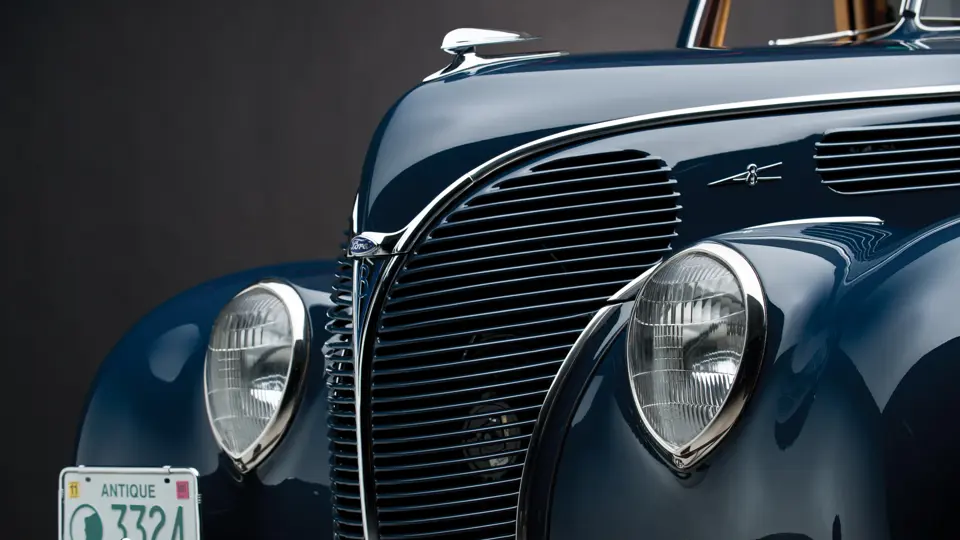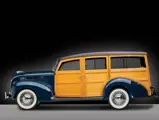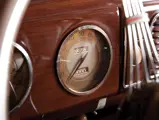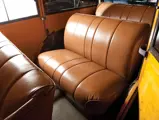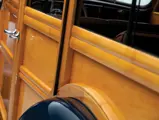MODEL 81A. 221 cu. in. L-head V-8 engine, three-speed manual transmission, solid front axle and live rear axle with transverse semi-elliptic leaf springs, and four-wheel mechanical drum brakes. Wheelbase: 112"
In 1938, for the first time, Ford’s Standard and Deluxe series were differentiated by their front end sheet metal. Through 1940, each year’s Standard cars had hoods and grilles similar to the previous year’s Deluxe, with slight differences, while Deluxe cars had a completely different look. For wagons in particular, 1938 marked a milestone: they were finally recognized as passenger cars, elevated from the commercial catalog.
Standard model cars had a modified 1937-style grille and hood, while the Deluxe models, the first to be styled by E.T. Gregorie’s new design section, adopted a heart-shaped motif. Sedans also got new bodies, with a curved fastback contour. All cars were available with the 85 bhp V-8, while Standard models could be ordered with the economy 136 cubic inch 60 bhp unit, which had become available in 1937. In mid-year, Ford upgraded the 85 bhp engine by adding three head bolts per side —these became known as “24-stud” engines.
On the station wagons, the bodies were newly configured, the five horizontal panels of 1935–1937 giving way to a two-panel configuration. Sliding glass windows in the rear, optional in 1937, were made standard. For 1938, it also seems that the station wagon was available only as a Deluxe model, with 6,944 built.
Another of the Dingman cars equipped especially for road touring, this 1938 Ford wagon has a 24-stud engine rebuilt to exacting standards by Roush Performance Products, the details of which are listed at the front of this catalog. All modifications that have been made for modern convenience are beautifully executed in such a way as to retain the car’s period correct appearance. The car has been rewired for 12-volts, to power a modern stereo system and other passenger comforts. These remain hidden, the radio using a period-type windshield header-mounted folding antenna. The 12-volt battery is ingeniously constructed to resemble the correct Ford Group 2L 6-volt unit. The car also has a hot-air heater-defroster on the right exhaust manifold.
The paint, in Washington Blue, is exceptional, exhibiting a deep shine with no surface flaws. The roof is covered in correct brown artificial leather, while the glass is all in excellent condition and etched with the correct Ford Oval. There is a single exterior rearview mirror on the driver’s door hinge. The odometer reads 73,567 miles, the seats are upholstered in brown leather, and the front floor has brown carpet, while the rear compartment has brown diamond-pattern mats.
The engine compartment is clean and shows signs of driving use, with more modern hoses and clamps. The engine, however, outwardly looks entirely stock for a 24-stud flathead. The magic of its Roush-bred internal organs becomes apparent only when under way. Firestone 6.00x16 double whitewall tires with spider trim on standard rims give an extra measure of panache to the otherwise stock-looking station wagon. A wolf in sheep’s clothing: perhaps, it will best be enjoyed on the open road.




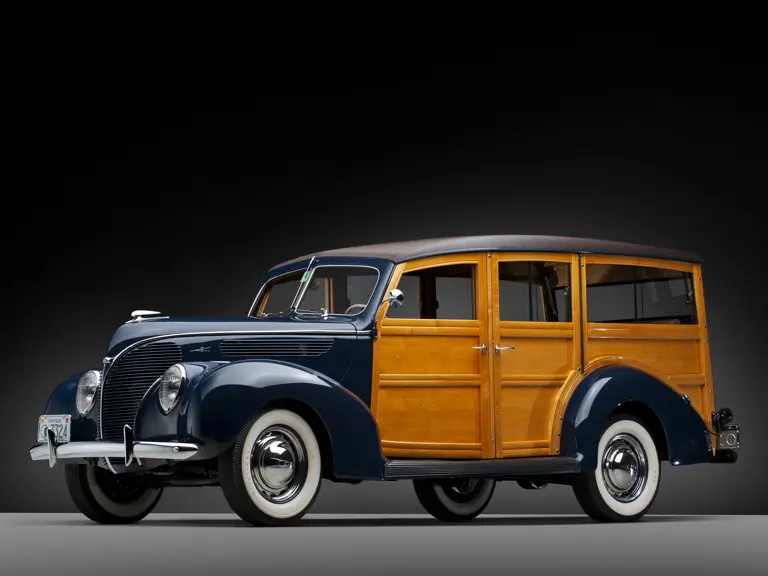

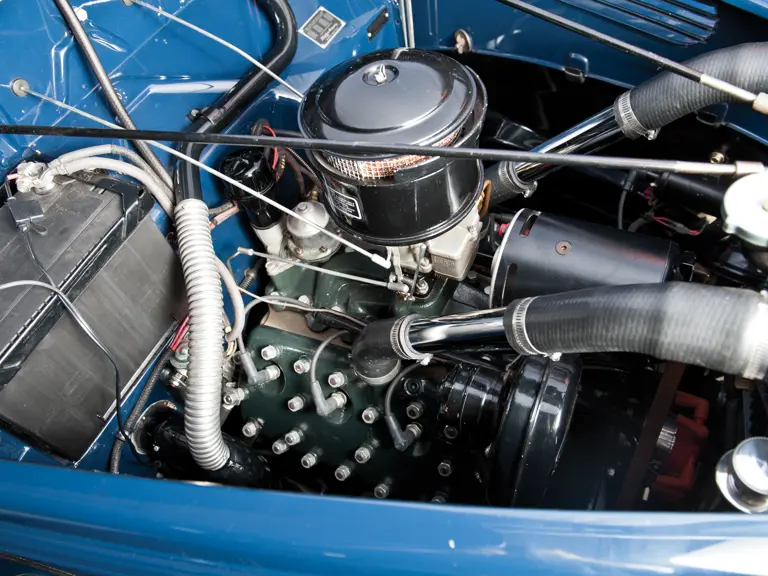


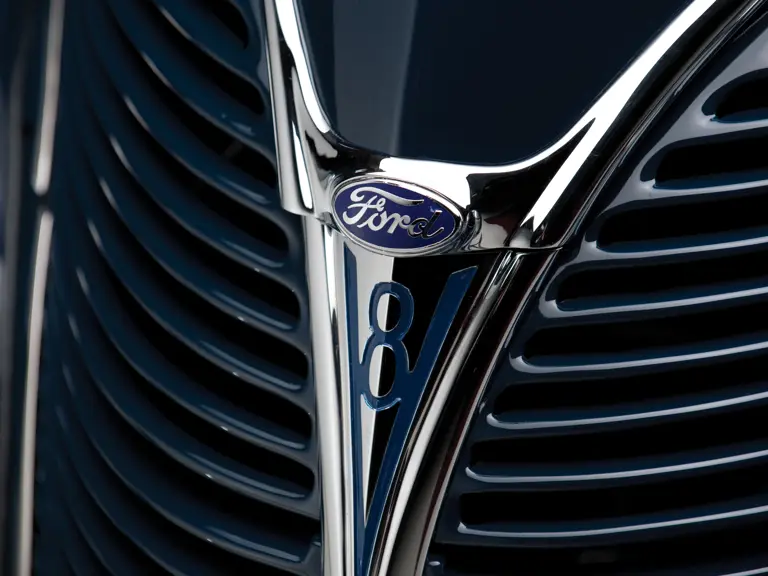
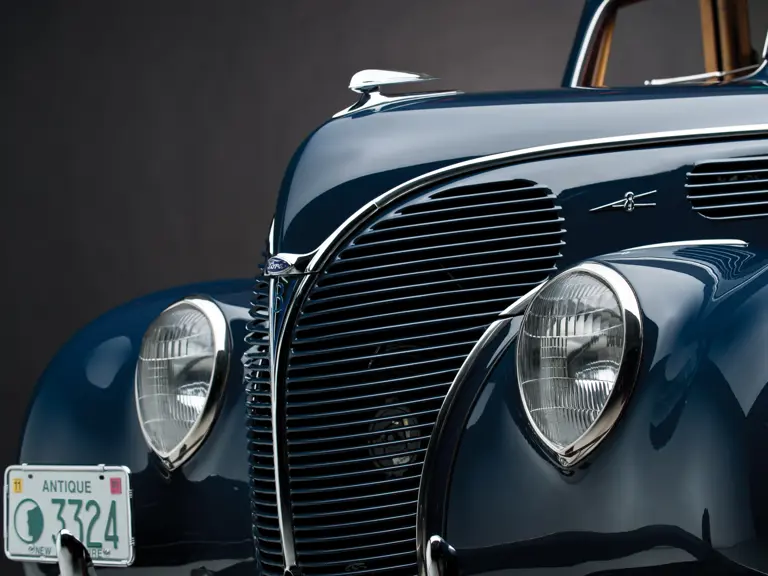
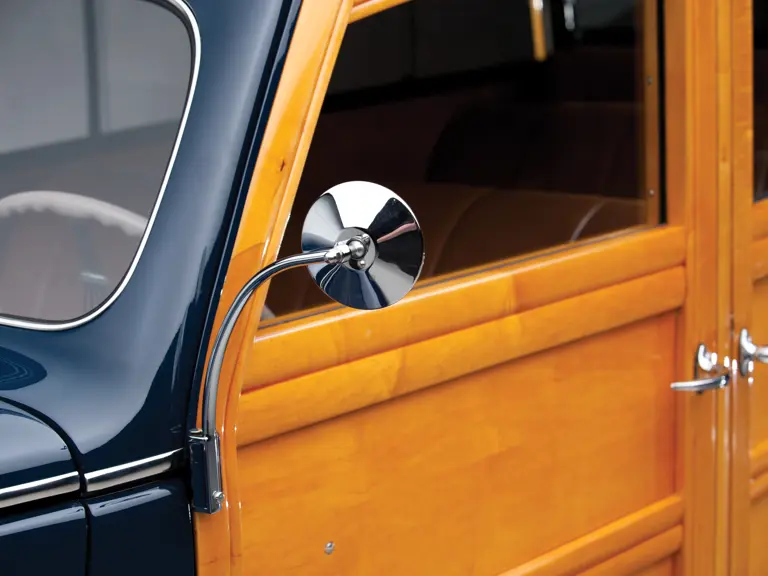

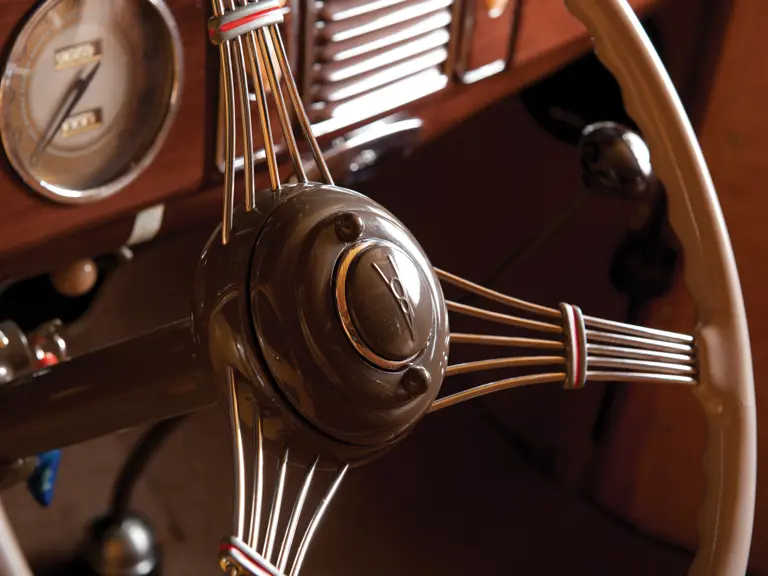
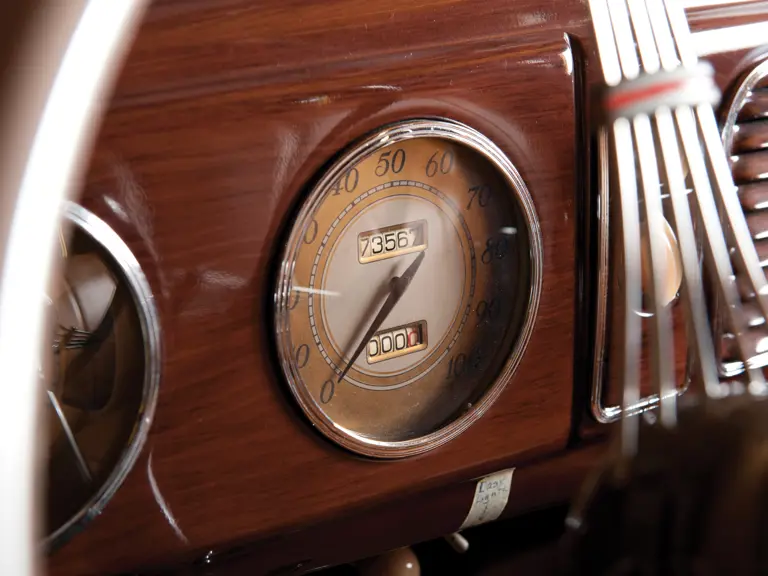

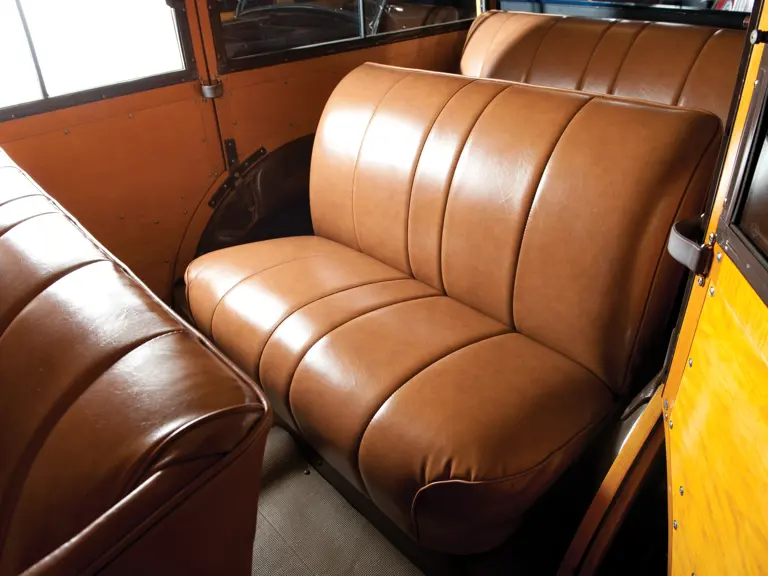
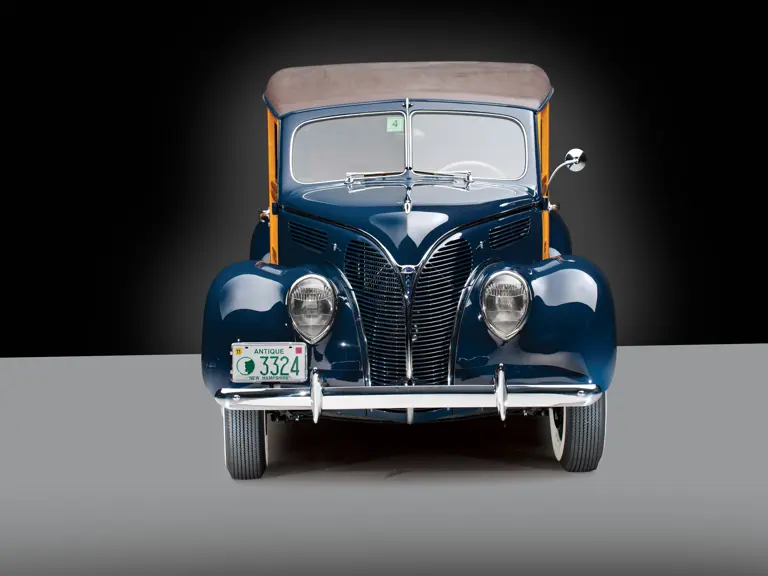
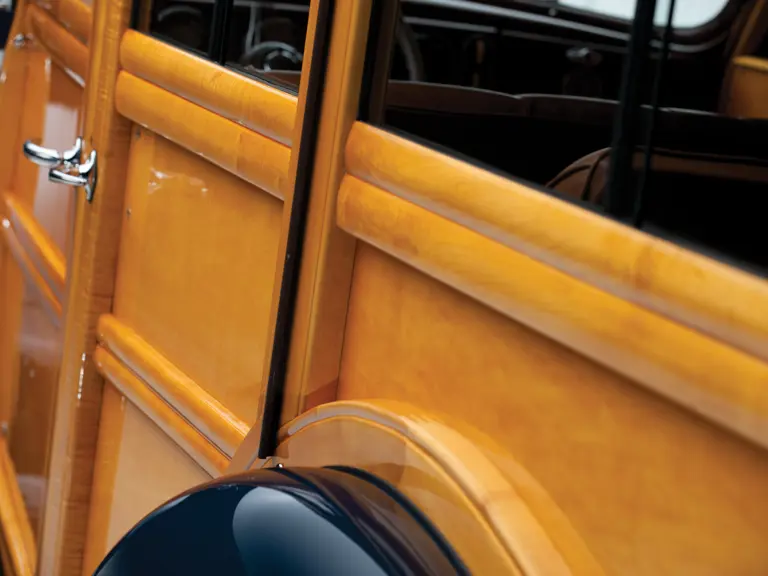
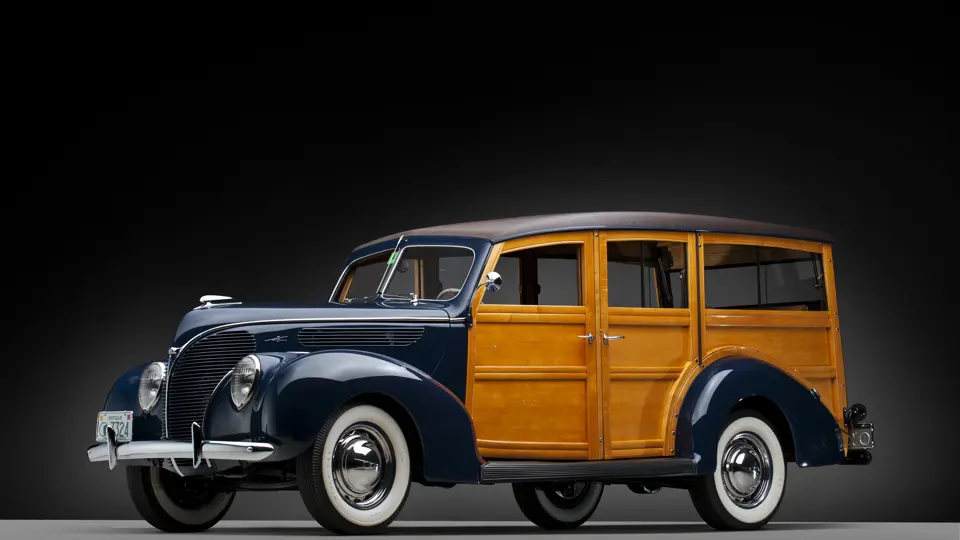
 | Hampton, New Hampshire
| Hampton, New Hampshire


